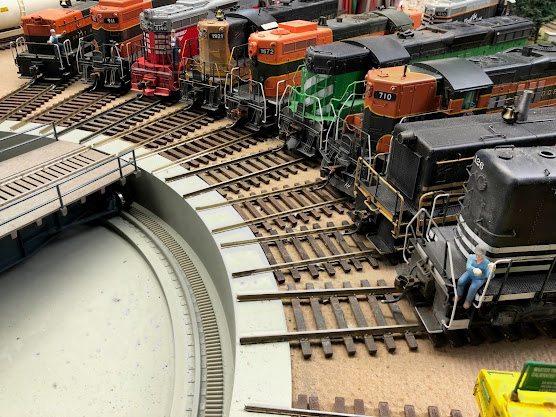This blog post is just a rant about the fact that any human activity involves a certain amount of "overhead", like it or not. For example, I resent the fact that I have to spend up to a third of my life sleeping when I could be doing something productive during those nighttime hours. Also, who likes to pay taxes, but in fact a well-functioning society needs things like courts, legislatures, fire departments, etc. in order to function well, and the cost of these services is another type of "overhead" for collectively enjoying a good life. Get over it. Pay your taxes and get some sleep.
I also resent the amount of time I spend with overhead in the hobby of model railroading. I developed the diagram shown above to illustrate a clinic on how to set up and use the braking features of modern locomotive decoders. I wanted to be clear how complex a simple DCC system can get, pretty quickly. All the operator wants is to experience is a train with realistic motion, lights and sound. but the experience provider (aka. layout owner and the various product manufacturers) will have a considerable overhead to maintain, both in designing the system and, per the asterisks in the diagram above, keeping up with "firmware upgrades." (I should have just said "software and hardware upgrades," but I wanted to sound fancy. For example, do you remember to replace the coin battery inside your NCE Powerhouse Pro every 5 years? I've been doing this religiously for almost 20 years now, and writing the date when I do it on the bottom of the unit on a sticky label I put there just for that purpose. You could call that a "hardware upgrade," but really it's just maintenance.).
Let's pick on one item for a minute - loco decoders. I am operating a layout with a combination of Tsunami and LokSound decoders in a fleet of over 80 locomotives. I generally use JMRI DecoderPro and NCE "Programming on the Main" (POM) to make adjustments in the Tsunami's, but one of the "advantages" of the ESU LokSound decoders is that, if you use their proprietary "LokProgrammer" hardware and software, you can "upgrade" the "firmware" in the decoders over time. In fact, I usually find when I unpack a new ESU-equipped loco from the store and hook it up to the LokProgrammer, the first thing it notices is the need for updated firmware to be loaded onto the "brand-new" locomotive.
But the LokProgrammer "free" software only runs on a PC platform, and I'm running a MacBook Pro (new in 2013 - uh-oh!). This means I need a $60 software called "Parallels Desktop" to create an artificial PC environment running inside my Mac, in order to download and operate the LokProgrammer. Which I only do occasionally. If you're familiar with the PC environment, you know that Windows is constantly uploading software upgrades and security patches, what seems like every few days. Go for two months without opening it, and you are in for a long process of downloading and installing these upgrades retroactively, often involving restarting the computer several times. When all I wanted to do was adjust some CV settings in a single locomotive.
It gets worse. Apple keeps upgrading its operating systems as well, and Parallels Desktop has to upgrade to keep up with that, while Microsoft has to continue to keep the Windows environment working. The end result is that, in anticipation of receiving my long awaited ESU-equipped ScaleTrains BN SD45's (which I'm sure are going to be super cool and fun)(which, by coincidence, are going to be arriving on my birthday, tomorrow!), I tried firing up my LokProgrammer yesterday to make sure everything is ready for those new 3600 horsepower monsters.
Forget about LokProgrammer - Parallels Desktop itself wouldn't open. I restarted this and that, re-downloaded and installed the program, and it still wouldn't open. I finally found a YouTube video with a guy in broken English telling me about a couple of lines of code to type into the "terminal" of the Mac (kind of like the inner control room of a nuclear power plant). Which I did, and then Parallels Desktop miraculously opened. Yay! Then, of course I had to restart the computer several more times for Windows to complete installing its latest security upgrades etc. Then, after at least 4 hours (or more) of time focused on nothing but computer overhead), the LokProgrammer software opened. But, of course, ESU recently released an upgrade, so I needed to download and install that, too. That task only took, say, 10 minutes, for which I was grateful and relieved. Just to make sure, I restarted the computer and started everything up again (another 10 minutes), and yes, it seems like I'm now, finally, ready to take in the new SD45's tomorrow. Happy Birthday!
"There has never been a better time to be a model railroader" is a true statement. We have an array of products, services, communication tools, research resources and inspiration that is unprecedented and worldwide. But it still has some overhead costs, just like everything else. I don't have to like them, but I have to pay them.




